Siopao Asado stands as a testament to the beautiful fusion of Filipino and Chinese culinary traditions. This steamed bun, with its pristine white exterior and rich, savory filling, has evolved from its Chinese baozi origins to become a quintessential part of Filipino cuisine. While readily available in convenience stores and restaurants across the Philippines, creating siopao at home offers an opportunity to experience this beloved dish in its most authentic form.
This recipe presents a refined approach to homemade Siopao Asado, focusing on achieving the perfect balance between the delicate, pillowy dough and the complex flavors of the braised pork filling. The preparation rewards the home cook with steamed buns that surpass their commercial counterparts in both texture and taste. The key lies in the careful proofing of the dough and the slow braising of the pork, allowing the aromatics and seasonings to develop into a rich, nuanced filling that defines an exceptional siopao.
This recipe has been carefully tested and refined to ensure consistent, restaurant-quality results in a home kitchen setting.
Jump to:
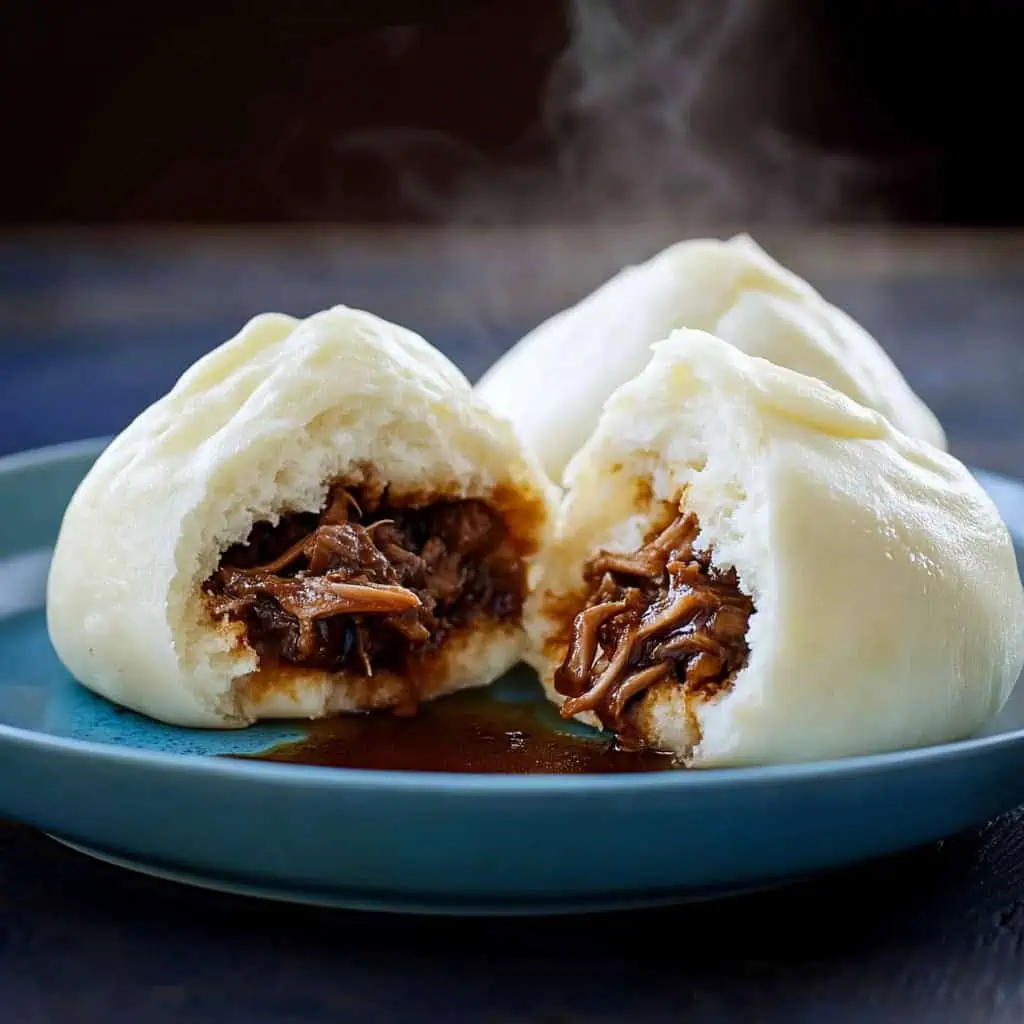
Why You'll Love This Recipe
- Authentic taste that rivals famous Filipino restaurants like Kowloon House
- Detailed step-by-step instructions ensuring perfectly white, fluffy buns
- Make-ahead friendly - perfect for batch cooking
- Restaurant-quality results at a fraction of the cost
- Family-tested recipe from a real Filipino kitchen
Ingredients
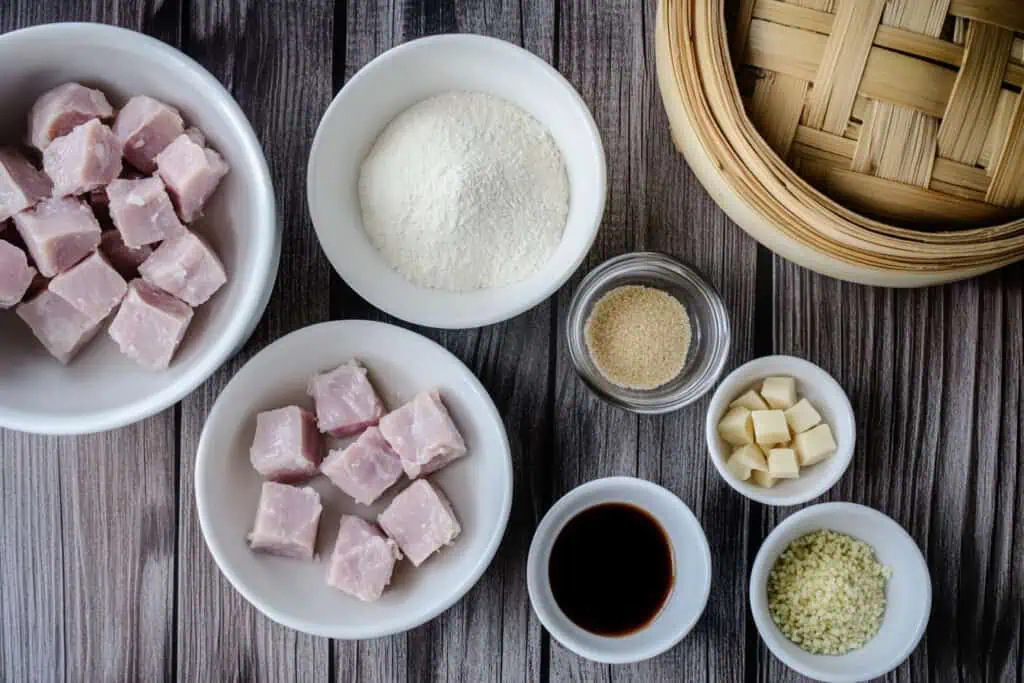
For the Bun Dough:
- 3 cups dumpling flour + ½ cup for dusting
- 200 ml warm water
- ½ cup + 2 teaspoons white sugar
- ½ teaspoon salt
- 1 tablespoon shortening or vegetable oil
- 1 teaspoon baking powder
- 2½ teaspoons active dry yeast
- ¼ cup lukewarm water for yeast
For the Asado Filling:
- 400g pork loin, cubed
- 2 tablespoons soy sauce
- 2 tablespoons hoisin sauce
- 2 tablespoons brown sugar
- 2 tablespoons cornstarch dissolved in ⅓ cup water
- 4 cloves garlic, minced
- 1 teaspoon Chinese five spice powder
- 1 cup water
- Cooking oil
- Salt to taste
For Steaming:
- Water
- 1 tablespoon white vinegar per liter of water (essential for keeping buns white)
Equipment
- Bamboo or metal steamer: Ensures even steam distribution for perfectly cooked buns
- Digital kitchen scale: Provides accurate measurements for consistent results
- Stand mixer with dough hook: Makes kneading easier and ensures proper gluten development (optional but recommended)
- Large mixing bowl: For proofing the dough
- Rolling pin: For rolling out dough evenly
- Heavy-bottomed pan: For cooking the filling
- Parchment paper squares (3×3 inches): Prevents buns from sticking
- Damp kitchen towel: Keeps dough covered and prevents drying
- Cutting board: For preparing ingredients
- Sharp knife: For cutting pork into uniform pieces
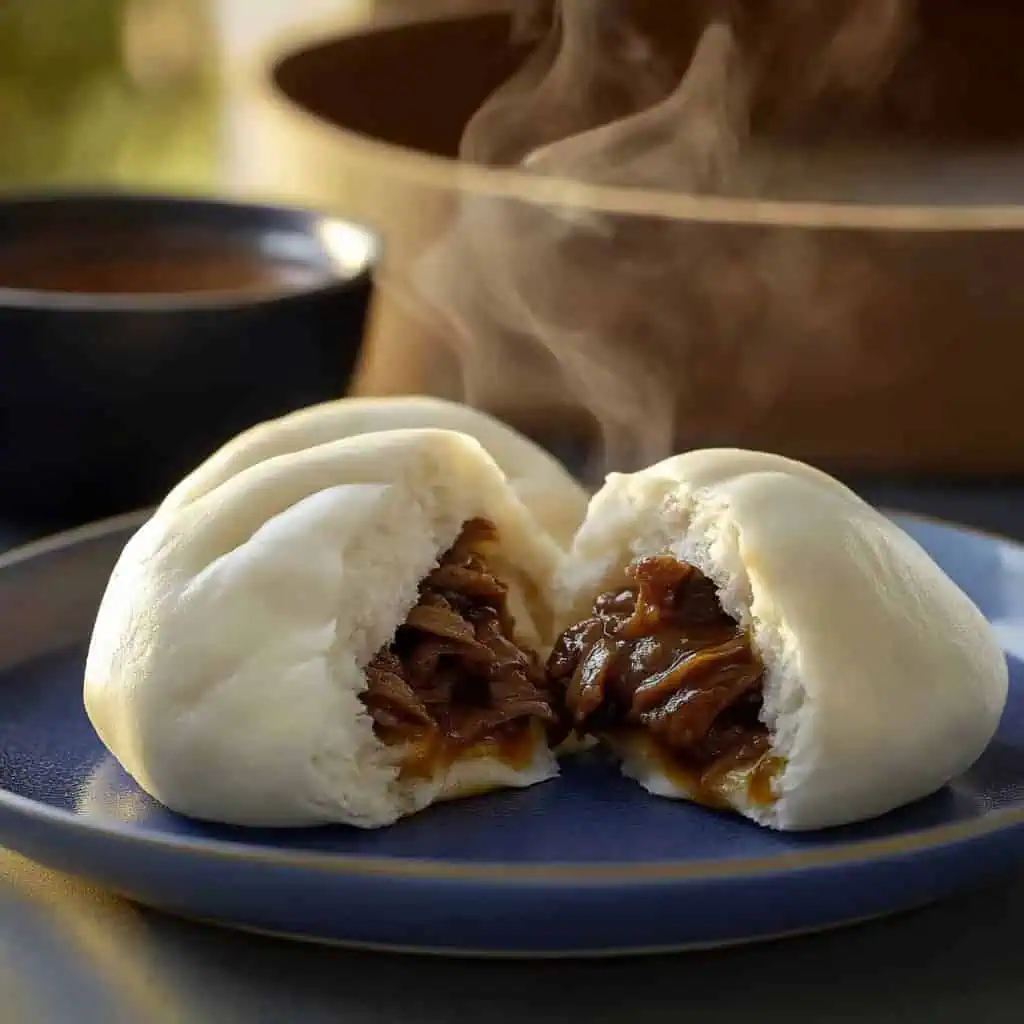
How To Make
- Prepare the filling: Heat oil in a heavy-bottomed pan over medium heat. Sauté minced garlic until fragrant, about 30 seconds. Add cubed pork loin and stir-fry for 3 minutes until lightly browned.
- Braise the pork: Add water, soy sauce, brown sugar, and Chinese five spice powder to the pork. Bring to a boil, then reduce heat and simmer for 2 hours or until the meat is very tender and easily breaks apart. Check occasionally and add more water if needed to prevent drying out.
- Finish the filling: Once the meat is tender, stir in the hoisin sauce. Mix cornstarch with water until smooth, then add to the pan. Simmer until the sauce thickens to a rich, glossy consistency. Season with salt to taste, then set aside to cool completely.
- Activate the yeast: Mix yeast with 2 teaspoons of sugar and lukewarm water in a small bowl. Let rest in a warm spot for 30 minutes until it becomes foamy and active.
- Make the dough: In a large bowl, combine dumpling flour, remaining sugar, salt, and shortening. Add your foamy yeast mixture and warm water. Mix until the dough comes together. Knead for about 10 minutes by hand (or 5-7 minutes with a stand mixer) until smooth and elastic.
- First proofing: Place dough in a lightly greased bowl, cover with a damp cloth, and let it rise in a warm place for 2 hours or until doubled in size.
- Second kneading: After the dough has doubled, punch it down to release air bubbles. Sprinkle baking powder over the dough and knead for 5 more minutes to incorporate. Divide into 8-10 equal pieces.
- Shape the buns: Roll each piece into a circle about 4 inches wide, making the edges thinner than the center. Place 2-3 tablespoons of filling in the middle. Carefully fold and pinch the edges together to seal, making pleats as you go around to create the classic siopao shape.
- Second proofing: Place each bun on a small square of parchment paper. Cover with a clean kitchen towel and let rise for 30 minutes.
- Steam the buns: Fill your steamer with water and add 1 tablespoon of white vinegar per liter of water. Bring to a boil. Place buns in the steamer, leaving about 2 inches between them to allow for expansion. Steam for 20-25 minutes over high heat.
- Rest before serving: When done, don't open the steamer right away. Turn off the heat and wait 5 minutes before opening to prevent the buns from collapsing.
- Serve: Enjoy your siopao hot, either plain or with siopao sauce.

Tips from Lola's Kitchen
- For extra white buns: Add 1 drop of white vinegar directly to the dough
- Steam with confidence: Never lift the steamer lid during cooking – this causes temperature fluctuations that result in collapsed or wrinkled buns
- Prevent dry dough: Keep all unused dough covered with a damp cloth to maintain moisture
- Choose the right fat: Use shortening instead of oil for whiter, fluffier buns
- Test your yeast: Always verify yeast activity before beginning – if it doesn't foam, it's likely inactive and needs replacement
- Filling consistency: The perfect asado filling should be moist but not runny – it should hold its shape when spooned
- Room temperature ingredients: Allow refrigerated ingredients to come to room temperature before using for best results
- Window pane test: To check if dough is properly kneaded, stretch a small piece – it should become thin enough to see light through without tearing
- Pleating technique: Create at least 8-12 pleats when sealing for the traditional look and even cooking
- Rest period: The 5-minute rest after steaming is crucial for texture development – don't rush this step
Substitutions
- Pork loin: Substitute with pork shoulder (kasim) for more flavor or chicken thigh for a lighter option
- Dumpling flour: Use all-purpose flour mixed with cornstarch (ratio: 1 cup flour + 1 tablespoon cornstarch)
- Hoisin sauce: Combine 2 tablespoons oyster sauce with 1 teaspoon honey and a pinch of five spice powder
- Chinese five spice powder: Make your own with equal parts ground star anise, cloves, cinnamon, and black pepper
- Shortening: Replace with unsalted butter or lard (mantika) for rich flavor, though this may affect the bun's whiteness
- Active dry yeast: Instant yeast can be used (reduce amount to 2 teaspoons) and can be added directly to dry ingredients without activation
- White sugar: Light brown sugar works but may slightly alter color
Troubleshooting
Dough Problems:
- Sticky dough: Add flour 1 tablespoon at a time until manageable. High humidity or too much water can cause this issue.
- Dense, heavy buns: Likely underproofed or using old yeast. Ensure proper proofing time (dough should double in size) and verify yeast freshness.
- Yellow-tinted buns: Add vinegar to steaming water and use shortening instead of butter or oil in the dough.
- Collapsed buns: Don't open steamer during cooking, ensure proper sealing, and allow 5-minute rest period after cooking.
- Wrinkled surfaces: Dough may have dried out. Keep covered throughout the process and create smoother pleats.
Filling Issues:
- Dry filling: Add water gradually during cooking; maintain low heat and longer cooking time.
- Runny sauce: Cook longer to reduce liquid or add more cornstarch slurry (1 teaspoon cornstarch mixed with 1 tablespoon cold water).
- Tough meat: Cook longer on low heat; ensure proper cut of pork or consider pressure cooking for 30 minutes instead.
- Bland filling: Adjust seasonings gradually, especially soy sauce, hoisin, and five spice powder.
- Filling leaking: Ensure edges are properly sealed and pleated; don't overfill the buns.
Storage & Reheating
Storage:
- Room temperature: Safe for 4-6 hours maximum (keep covered)
- Refrigerator: Store in an airtight container for 3-4 days
- Freezer: Store for up to 3 months (wrap individually in plastic wrap, then place in airtight container)
Reheating Methods:
- Steaming (Recommended):
- Steam frozen buns for 8-10 minutes without thawing
- Steam refrigerated buns for 5-6 minutes
- Use the vinegar-water solution for reheating to maintain whiteness
- Microwave (Quick method):
- Wrap each bun in a damp paper towel to prevent drying
- Heat for 30-45 seconds per bun at medium power
- Let rest for 30 seconds before eating for even temperature distribution
- Make-ahead tip: If planning to reheat later, slightly undercook buns by 2-3 minutes during the initial steaming.
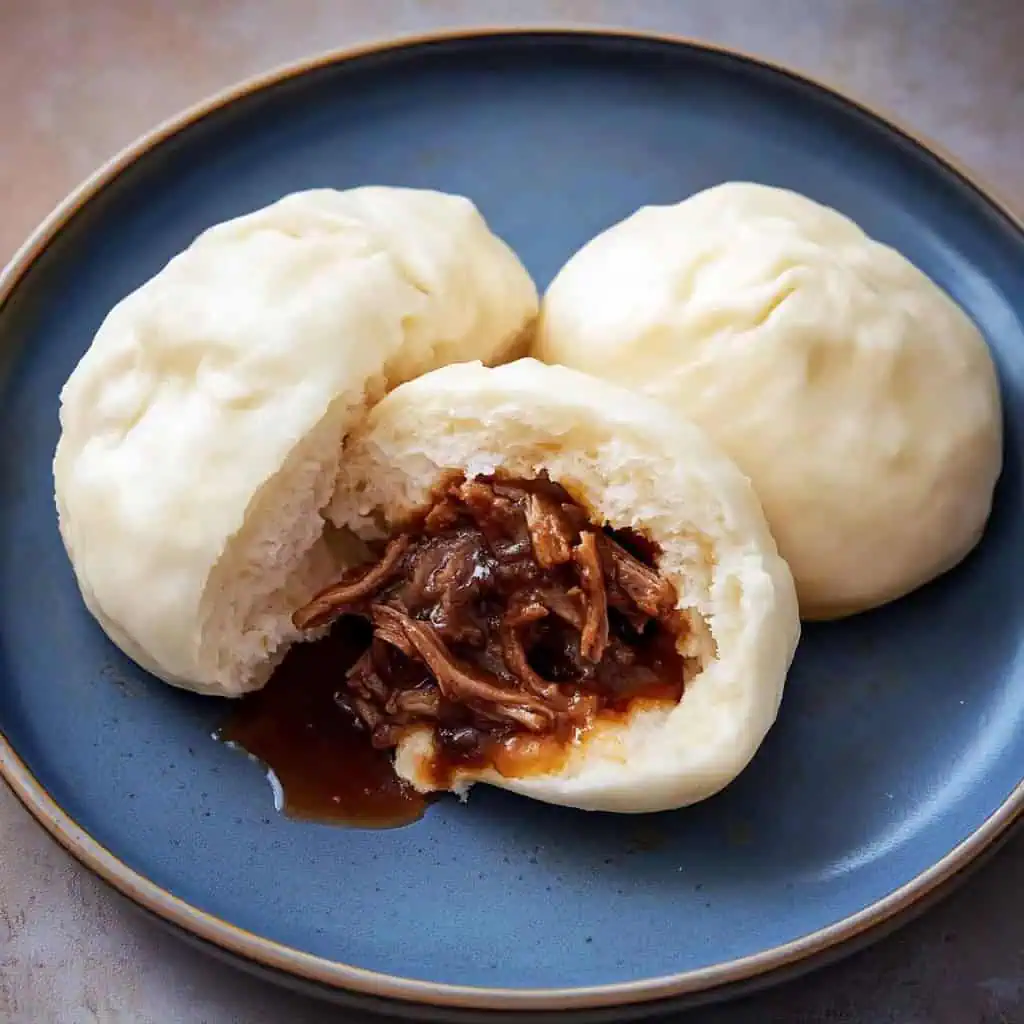
FAQ
Why did my dough not rise properly?
Check your yeast's freshness and expiration date. Ensure the water temperature is lukewarm (105-110°F/40-43°C) – too hot will kill the yeast, too cold won't activate it. Also, keep the dough in a warm, draft-free environment during proofing.
Can I make this recipe ahead for a party?
Absolutely! Prepare the filling 2-3 days ahead and refrigerate. You can also make and freeze the complete buns for up to 3 months. Steam frozen buns for 8-10 minutes without thawing first.
How do I know when the dough is properly kneaded?
The dough should pass the "window pane test" – take a small piece and stretch it between your fingers until translucent without breaking. The surface should be smooth and elastic, not sticky.
My buns aren't white enough. What went wrong?
Add vinegar to the steaming water, use shortening instead of oil in the dough, ensure proper steaming temperature, and consider adding a drop of white vinegar directly to the dough.
Can I use a regular pot instead of a steamer?
Yes! Create a makeshift steamer by placing a heat-proof plate on small ramekins in a large pot with water. Ensure the water doesn't touch the plate and cover the pot with a tight-fitting lid.
Why did my buns collapse after steaming?
Don't open the lid during steaming, and allow the buns to rest for 5 minutes with the heat off before removing the lid. Sudden temperature changes cause collapse.
How do I know when the filling is cooked perfectly?
The pork should be tender enough to easily break apart with a fork, and the sauce should coat the back of a spoon without being watery.
Can I make a vegetarian version?
Yes! Substitute the pork with 2 cups of mixed mushrooms (shiitake and button work well) plus 1 cup of diced firm tofu or textured vegetable protein. Use the same seasonings and cooking method.
Related
Looking for other recipes like this? Try these:
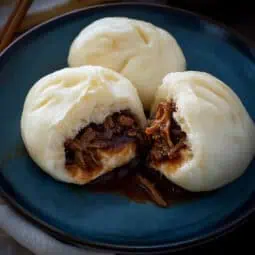
Authentic Filipino Siopao Asado (Sweet Braised Pork Steamed Buns)
Equipment
- Bamboo steamer or metal steamer Ensures even steam distribution for perfectly cooked buns
- Digital kitchen scale Accurate measurement for consistent results
- Stand mixer with dough hook (optional but recommended) Makes kneading easier and ensures proper gluten development
- Large mixing bowl For proofing the dough
- Rolling Pin For rolling out dough evenly
- Heavy-bottom pan For cooking the filling
- Parchment paper squares (3x3 inches) Prevents buns from sticking
Ingredients
For the Bun Dough:
- 3 cups dumpling flour pampasiopao na harina + ½ cup for dusting
- 200 ml warm water maligamgam na tubig
- ½ cup + 2 teaspoon white sugar puting asukal
- ½ teaspoon salt asin
- 1 tablespoon shortening or vegetable oil
- 1 teaspoon baking powder pampalaki
- 2½ teaspoon active dry yeast lebadura
- ¼ cup lukewarm water for yeast
For the Asado Filling:
- 400 g pork loin lomo ng baboy, cubed
- 2 tablespoon soy sauce toyo
- 2 tablespoon hoisin sauce sarsa ng intsik
- 2 tablespoon brown sugar maskubadong asukal
- 2 tablespoon cornstarch gawgaw, dissolved in ⅓ cup water
- 4 cloves garlic bawang, minced
- 1 teaspoon Chinese five spice powder limang pampalasa
- 1 cup water
- Cooking oil
- Salt to taste
For Steaming:
- Water
- 1 tablespoon white vinegar per liter of water Important: keeps buns white
Instructions
- Start by preparing your filling. Heat oil in a pan over medium heat and sauté minced garlic until fragrant, about 30 seconds. Add your cubed pork loin and stir-fry for 3 minutes until lightly browned.
- Add water, soy sauce, brown sugar, and Chinese five spice powder to the pork. Bring to a boil, then lower heat and simmer for 2 hours or until the meat is very tender and easily breaks apart. Check occasionally and add more water if needed.
- Once the meat is tender, stir in the hoisin sauce. Mix cornstarch with water until smooth, then add to the pan. Simmer until the sauce thickens. Season with salt to taste, then set aside to cool completely.
- For the dough, start by mixing yeast with 2 teaspoons of sugar and lukewarm water in a small bowl. Let this rest in a warm spot for 30 minutes until it becomes foamy.
- In a large bowl, combine dumpling flour, remaining sugar, salt, and shortening. Add your foamy yeast mixture and warm water. Mix until the dough comes together. Knead for about 10 minutes until smooth and elastic.
- Place your dough in a greased bowl, cover with a damp cloth, and let it rise in a warm place for 2 hours or until doubled in size.
- After the dough has doubled, punch it down. Sprinkle baking powder over the dough and knead for 5 more minutes. Divide into 8-10 equal pieces.
- Roll each piece into a circle about 4 inches wide, making the edges thinner than the center. Place 2-3 tablespoons of filling in the middle. Carefully fold and pinch the edges together to seal, making pleats as you go.
- Place each bun on a small square of parchment paper. Cover them with a clean kitchen towel and let rise for 30 minutes.
- Fill your steamer with water and add 1 tablespoon of white vinegar per liter of water - this keeps your buns white. Bring to a boil. Place buns in the steamer, leaving space between them for expansion. Steam for 20-25 minutes over high heat.
- When done, don't open the steamer right away. Turn off the heat and wait 5 minutes before opening to prevent the buns from collapsing.
- Serve your siopao hot, either plain or with siopao sauce. You can store any extras in an airtight container in the refrigerator for up to 3 days, or freeze them for up to 3 months.
- Pro tip: If you're making these ahead, slightly undercook them by 2-3 minutes if planning to reheat later. When reheating frozen buns, steam them for 8-10 minutes without thawing first.
Tips from Lola's Kitchen
- Add 1 drop white vinegar to the dough for extra white buns
- Never lift steamer lid during cooking
- Keep dough covered when not using to prevent drying
- Use shortening instead of oil for whiter buns
- Test yeast activity before starting
Nutrition
The Story Behind Siopao Asado
The story of Siopao Asado weaves together centuries of cultural exchange between Filipino and Chinese communities, reflecting the deep-rooted influence of Chinese immigrants on Filipino cuisine. This beloved steamed bun, known in Chinese as "baozi" (包子), made its journey to Philippine shores during the pre-colonial period through early Chinese traders and settlers who established themselves in Manila's Binondo district, now recognized as the world's oldest Chinatown.
In its transformation from Chinese baozi to Filipino siopao, this humble steamed bun adapted to local tastes while maintaining its essential character. The Hokkien term "siopao" itself demonstrates the lasting impact of Fujian province immigrants, who contributed significantly to Filipino culinary traditions. The "asado" variation, featuring sweet-savory braised pork, emerged as a distinctly Filipino interpretation that balanced Chinese cooking techniques with local flavor preferences.
By the mid-20th century, siopao had become deeply embedded in Filipino food culture, transcending its origins to become a staple of street food vendors, restaurants, and home kitchens across the archipelago. Notable establishments like Ma Mon Luk, founded in the 1920s, helped popularize siopao as an everyday comfort food, while Kowloon House later became renowned for their "jumbo" variety featuring an elaborate filling of mixed meats and salted egg.
The evolution of siopao in Filipino cuisine mirrors broader historical patterns of cultural adaptation and innovation. While Chinese baozi typically features a savory filling, Filipino siopao embraces a slightly sweeter profile, incorporating ingredients like brown sugar and hoisin sauce that create the distinctive asado flavor. This adaptation reflects the Filipino palate's appreciation for the interplay of sweet and savory elements, a characteristic that distinguishes many Filipino dishes.
Today, siopao holds a special place in contemporary Filipino food culture, available everywhere from convenience stores to high-end restaurants. Its enduring popularity speaks to both its practical appeal as a portable, complete meal and its emotional resonance as a food that connects generations of Filipinos to their cultural heritage. The tradition of home-cooked siopao continues to thrive, with families passing down closely guarded recipes that often feature unique variations in filling and technique.
As Filipino cuisine gains global recognition, siopao stands as a testament to the Philippines' rich history of cultural synthesis. This seemingly simple steamed bun encapsulates centuries of culinary evolution, demonstrating how food can transcend cultural boundaries to become something entirely new while honoring its origins. The art of making siopao at home preserves this legacy, allowing each new generation to participate in this continuing story of Filipino culinary innovation.
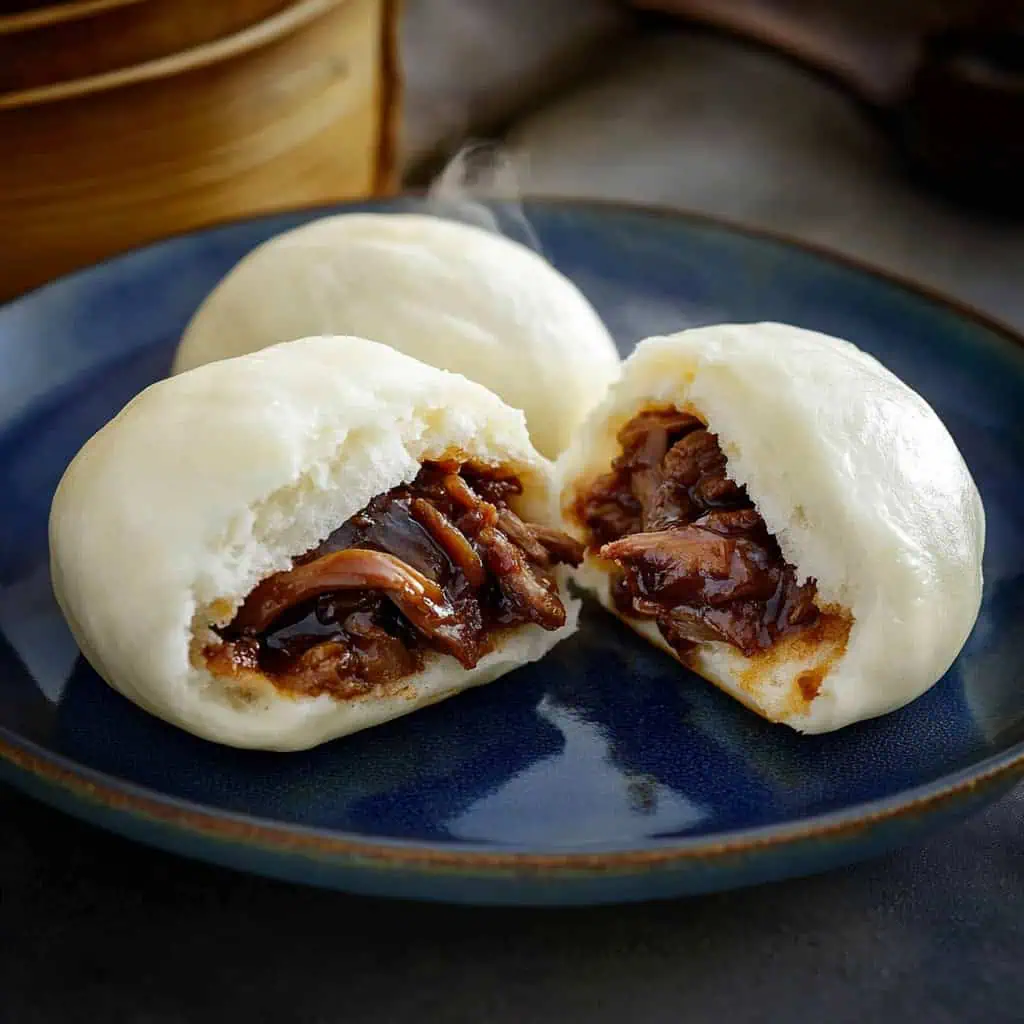







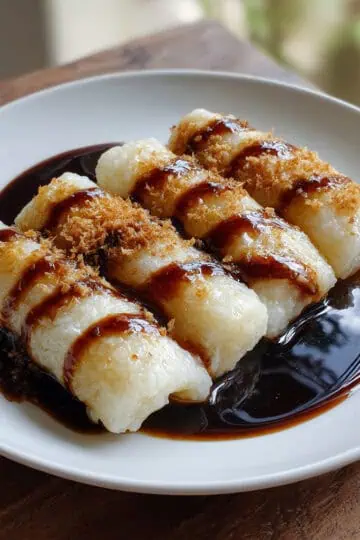
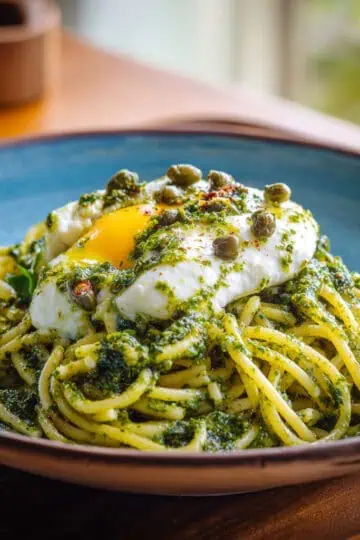
Comments
No Comments